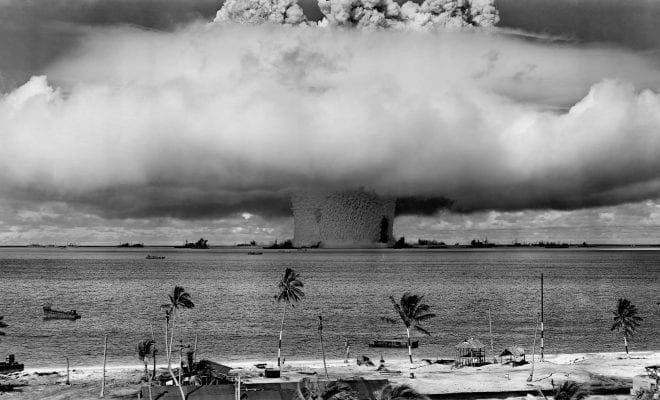
News
Islands Where US Conducted Nuclear Tests Found to be More Radioactive than Chernobyl
From 1946 to 1958, the United States government conducted 67 nuclear tests on several small atolls in the Marshall Islands. Today, radiation levels gathered near these islands are higher than that of Chernobyl and Fukushima, both of which some of the most well-known nuclear disasters in history occurred.
Columbia University just released new research claiming that radiation levels on four small islands in the Pacific Ocean are extremely high. In some areas, radiation levels are 10-1,000 times higher than that of the abandoned Chernobyl power plant and the Fukushima power plant. The Chernobyl plant exploded in 1986, while the Fukushima power plant was damaged by an earthquake, causing it to fail and spew radiation throughout the area.

Radiation levels were ascertained when researchers collected soil samples from 11 atolls across the Marshall Islands. The analysis found the samples contained highly radioactive isotopes that are emitting harmful gamma rays capable of causing radiation poisoning and cancer.
The chain of islands is sparsely populated, with some 75,000 people inhabiting the various islands and atolls. Places like Bikini Island and Enewetak Atoll absorbed more than half of the nuclear energy expelled there during testing. Residents of Bikini Atoll were relocated after the testing in 1946, due to unsustainable water and food resources. Some returned later in the 1960s but left shortly afterward due to unsafe radiation levels.
The report urges that area within the Marshall Islands should be classified as having no use at all. Radiation levels there are simply too high for people to live relatively healthy lives, as the constant bombardment of gamma-ray energy can cause radiation sickness, cancer, cardiovascular disease, and the contamination of food and water sources.
There has also been concern over whether the nearby contamination could spread into the ocean and be carried out further than the initial testing sites. Researchers fear that rising sea levels could carry the radioactive isotopes into nearby lagoons and even out into further areas of the sea.


0 comments